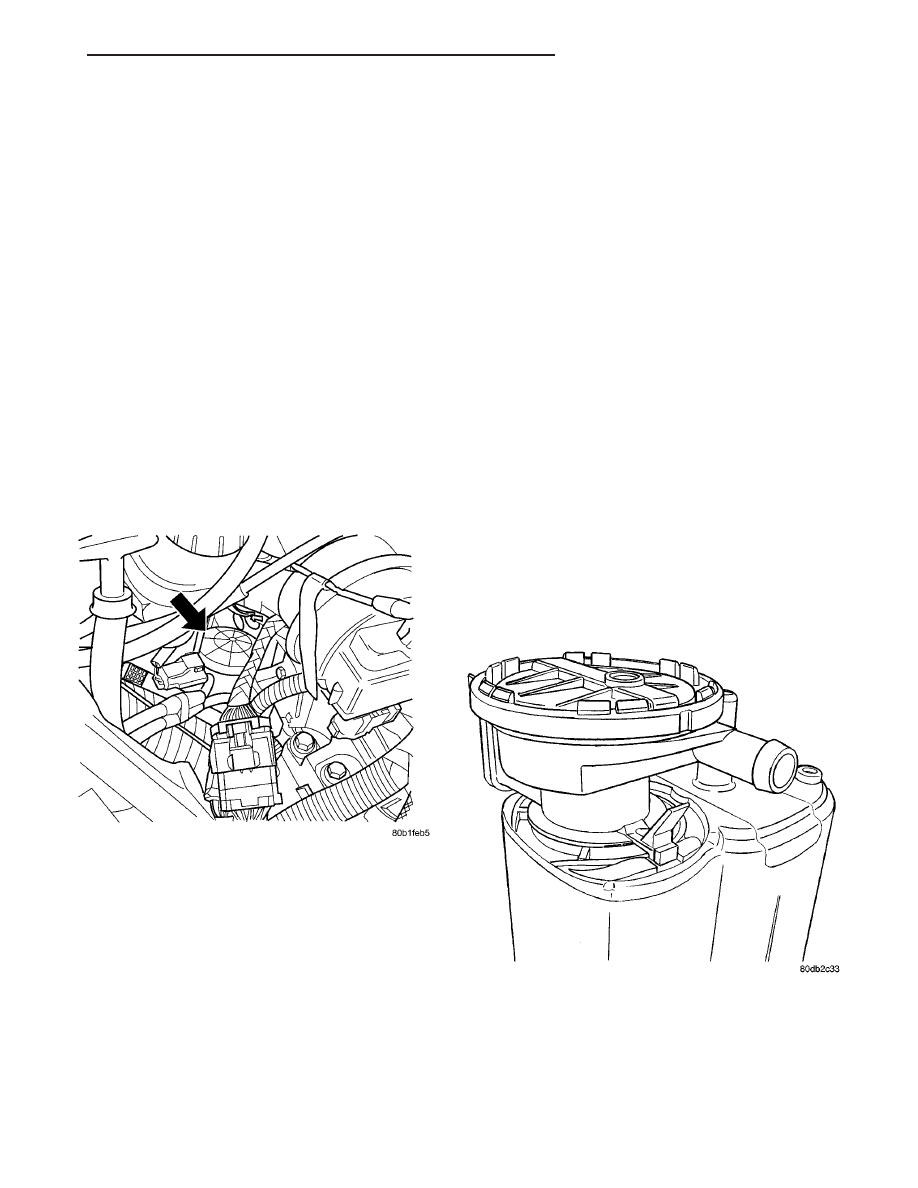Chrysler Sebring, Stratus sedan, Sebring Convertible. Manual - part 749

EVAP/PURGE SOLENOID
OPERATION
During the cold start warm-up period and the hot
start time delay, the PCM does not energize the sole-
noid. When de-energized, no vapors are purged.
The proportional purge solenoid operates at a fre-
quency of 200 hz and is controlled by an engine con-
troller circuit that senses the current being applied
to the proportional purge solenoid and then adjusts
that current to achieve the desired purge flow. The
proportional purge solenoid controls the purge rate of
fuel vapors from the vapor canister and fuel tank to
the engine intake manifold.
REMOVAL
(1) Disconnect the negative battery cable.
(2) Remove the air cleaner box.
(3) Disconnect the electrical connector.
(4) Disconnect the vacuum hoses.
(5) Remove purge solenoid from the bracket (Fig.
2).
INSTALLATION
(1) Install purge solenoid onto bracket (Fig. 2).
(2) Connect the vacuum hoses.
(3) Connect the electrical connector.
(4) Install the air cleaner box.
(5) Connect the negative battery cable.
FUEL FILLER CAP
DESCRIPTION
The plastic fuel fill cap is threaded/quarter turn
onto the end of the fuel filler tube. It’s purpose is to
retain vapors and fuel in the fuel tank.
OPERATION
The fuel filler cap incorporates a two-way relief
valve that is closed to atmosphere during normal
operating conditions. The relief valve is calibrated to
open when a pressure of 17 kPa (2.5 psi) or vacuum
of 2 kPa (0.6 in. Hg) occurs in the fuel tank. When
the pressure or vacuum is relieved, the valve returns
to the normally closed position.
CAUTION: Remove the fuel filler cap to release fuel
tank pressure before disconnecting any fuel system
component.
NATURAL VAC LEAK
DETECTION ASSY
DESCRIPTION
The natural Vacuum Leak detection (NVLD) sys-
tem is mounted on top of the EVAP canister (Fig. 3)
that is mounted on the fuel tank.
OPERATION
The Natural Vacuum Leak Detection (NVLD) sys-
tem is the next generation evaporative leak detection
system that will first be used on vehicles equipped
with the Next Generation Controller (NGC). This
new system replaces the leak detection pump as the
Fig. 2 PURGE SOLENOID
Fig. 3 NVLD ASSEMBLY
JR
EVAPORATIVE EMISSIONS
25 - 13